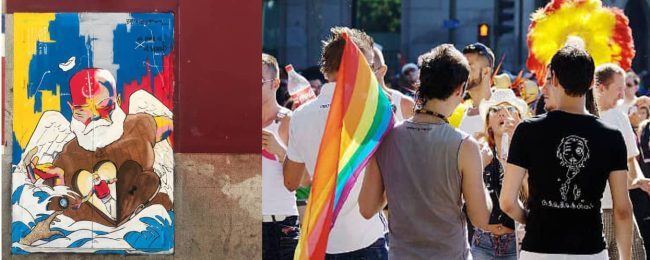
What is Movida Madrileña? – More than a Revolutional Cultural Movement
Movida Madrileña is a cultural movement, but also a societal revolution, a wave of sexual, artistic and, according to some, even political freedom.
Particularly affecting the city of Madrid in the 70s and 80s, Movida Madrileña started after the end of Franco’s dictatorship, it gradually spread to other Spanish cities.
The origins of the movement
General Franco’s military dictatorship in Spain lasted from 1939 to 1975. For almost 40 years, political and personal freedoms were severely restricted. Even though Spain was gradually opening up to globalization, society remained very conservative: divorce was forbidden, as were abortion and even homosexuality. The press was repressed, and political groupings and plurality were impossible. Then, with the death of General Franco, the doors suddenly opened, and the political transition under King Juan Carlos Primero was accompanied by a cultural transition in the capital.
Far from taking a political view of what was happening in Spain, Madrid’s youth wanted to forget, move on and create, at last. And so, without demands, without manifesto, without leader and without school, the Movida Madrileña took shape, with a simple mantra: Solo se vive una vez (we only live once).

The parties are back on, and so are the arts
The Movida began with a simple need to express freedom, but took many forms. As young people come out and express their personalities and genders in the streets of Madrid, concerts, exhibitions, happenings and film shoots are given new life. The musical trend is rock, punk and acid pop, inspired by David Bowie or Led Zeppelin. Photography, drawing, painting and film were also on the agenda, as was creating with whatever was at hand or available from friends. This is how artists such as Pedro Almodovar and his companion Fabio McNamara, of course, as well as Pablo Perez Minguez and Ouka Leele, began to emerge, driven by an idea and their loyal community. Magazines sprang up, such as the fanzine Bazofia, printed in a few editions and distributed throughout the city, as fashionable clothes were another means of expressing themselves and breaking with traditional manners.

This momentum was accompanied by political support from Madrid’s new mayor. Enrique Tierno Galvan, a socialist professor exiled during the Franco period, pushed Madrid’s affirmation through the arts, and allowed festivities, such as reintroducing Carnival. This was even his first measure, reversing the image of military parades and the rigidity that the city had known. The mayor intends to take advantage of Madrid’s new image to compete with metropolises such as Barcelona, more attractive to tourists. The Movida created a true cultural identity for the capital, one that remains anchored in the collective imagination throughout Europe to this day.
Posterity
Despite the fact that the movement gradually disintegrated until 1986, the year of Enrique Tierno Galvan’s death, its scope enabled the financing of a variety of cultural projects. The famous Mecano group, for example, signed a major label and made its name known to the rest of the world, while Pedro Almodovar remains an emblematic figure of Spanish cinema with its colorful, joyful and progressive spirit.
But Movida also contributed to the opening of iconic music spots in Madrid, and the presence of this festive spirit in the neighborhoods chosen by the partygoers of the 70s. Places like the Rock Ola became famous for hosting Iggy Pop and Depeche Mode. El Sol, El Pentagrama and La Via Lactea, still open today, offered all-night celebrations, while the Rastro flea market welcomed the latest enthusiasts following an after-party in each other’s apartments, where drugs were also often used… In line with the hippie movement in the United States and May ’68 in France, young people adventured on all terrains, creating a community of solidarity in opposition to the old world.

The Movida ends in a rather obvious way, as a transitional movement between dictatorship and contemporary Spanish society, accompanying a period of radical change, modernization and questioning, and not destined to last. Nevertheless, this creative decade has left us with bars, clubs and works of art, and even more importantly, a festive, open and progressive spirit that can still be felt in Madrid for any visitor.
To find out more about the underground music phenomenon of the Movida Madrileña, click here: Movida Countercultural Movement
And if you want to know more about Madrid, do not miss our free tour Madrid .
We will be waiting for you with open arms!